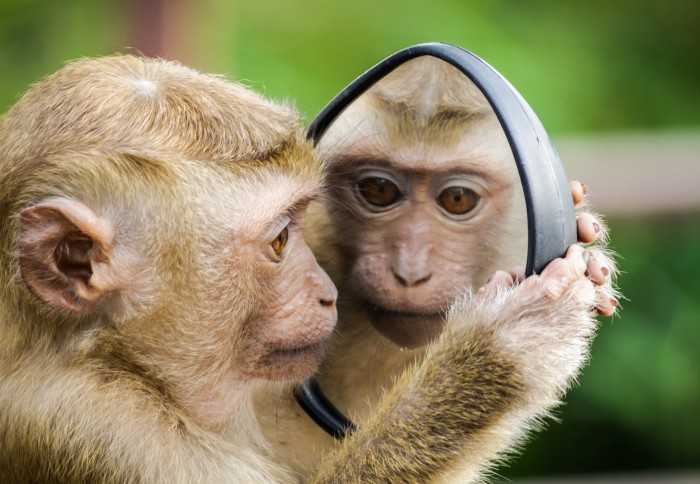Study reveals how human brains have evolved to be smarter than other animals
by Gemma Ralton

New study adds an important piece to the puzzle of human brain evolution, explaining why humans are more cognitively advanced than other animals.
Scientists are a step closer to understanding the question of how information is processed in the human brain that has long intrigued scientists.
In a study, published in Nature Neuroscience, scientists from Imperial’s Data Science Institute and the University of Cambridge used evidence from different species and multiple neuroscience disciplines to track how the brain processes information.
They found that different brain regions use different strategies to interact with each other. This combination of complementary information between different sources is known as ‘synergy’ and may explain why the human brain is smarter than our primate ancestors.
Co-author Dr Fernando Rosas said, “The framework we developed in this study is exciting as it combines fundamental theoretical principles with practical data analysis tools to bring new answers to challenging neuroscientific questions.”
Brains like computers
Current theoretical models describe the brain as a distributed information processing system. This means, in a similar way to a computer, the brain is made of distinct components which are wired together in a tight network of neurons and synapses.
Different brain components have different roles or functions. For example, there are areas that are specialised in processing sensory information such as colours, shapes or sounds, and others in processing information related to movement (for example, activation and coordination of muscles).
Additionally, there are some brain regions that are believed to integrate information coming from different sensory modalities in order to carry out more complicated processing, including planning, decision-making, or even the construction of self-narratives and personal identity. It is believed these different types of brain regions process information differently and therefore exhibit different patterns of activity.
Information processing: Synergy vs redundancy
In the study, the team introduce two key methods of information-processing: redundancy and synergy.
Redundant processing is related to interactions that keep multiple copies of the same information in different places. This was found to be common for sensory and motor regions of the brain, where having multiple redundant copies of the same important information is crucial to survival (for example, seeing a predator and moving away at the right moment).
In contrast, synergistic processing is related to patterns distributed between different brain regions where their informative power together equals more than the sum of its parts.
Through using rigorous and mathematical methods to measure synergistic information, the team found that synergy is most prevalent in brain regions that support a wide range of more complex cognitive functions such as attention, learning, working memory, and social and numerical cognition.
Their findings suggest that the human brain puts together different types of information to enable more complex cognitive functions that are distinctive of humans.
Our primate ancestors
In comparison to monkeys such as Macaques, the human brain seems to exhibit significantly higher levels of synergy.
According to Dr Rosas: “Synergistic relationships are structured in a highly efficient network, which may enable secondary routes of information processing that are not so developed in other primates.”
“Therefore, from this study, we speculate that the advantages of greater synergy, may, in part, explain our species’ additional cognitive capabilities.”
Promising insights in neuroscience
Dr Rosas said: “The framework we developed holds the promise of critical new insights into a wide array of neuroscientific questions, from those about general cognition to its disfunctions. Future studies will show, for example, if these new biomarkers of information processing modalities may be helpful in the diagnosis of neurological or psychiatric conditions.”
Recent investigations in this area have shown that synergy and integrated information can be used as an effective biomarker to track states of loss of consciousness. Furthermore, more generally it has been argued in another recent study that markers of different types of information-processing phenomena in dynamical processes may provide a promising foundation to further our understanding of how the human brain gives rise to consciousness itself.
These promising insights into how the brain works could also open the door for explorations in artificial intelligence which could emulate these distinctive ways of processing information. In effect, this recent work is starting to disentangle how to engineer mechanisms that can give rise to these complex high-order information processing modalities, which in turn may open the door to many exciting future AI applications.
-
‘A synergistic core for human brain evolution and cognition’ by Luppi et al., published on 26 May 2022 in Nature Neuroscience.
‘The strength of weak integrated information theory’ by Mediano et al., published August 2022 in Trends in Cognitive Sciences.
‘Disentangling high-order mechanisms and high-order behaviours in complex systems’ by Rosas et al., published on 21 March 2022 in Nature Physics.
Article text (excluding photos or graphics) © Imperial College London.
Photos and graphics subject to third party copyright used with permission or © Imperial College London.
Reporter
Gemma Ralton
Faculty of Engineering